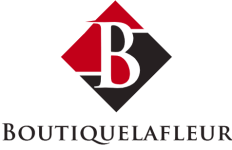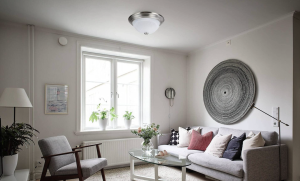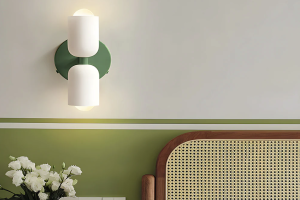Cold light, often referred to as cool light, is characterized by its bluish-white hue, typically ranging from 4000K to 6500K on the Kelvin scale. This type of lighting mimics natural daylight, which can have a significant impact on the ambiance and functionality of a space. Cold light is produced by various sources, including fluorescent bulbs, LED lights, and certain types of halogen lamps.
The color temperature of cold light is essential in determining how it affects the perception of colors and the overall mood within a room. In practical terms, cold light is often associated with clarity and brightness, making it an ideal choice for environments where precision and attention to detail are paramount. For instance, in a kitchen setting, cold light can enhance visibility, allowing for better food preparation and cooking experiences.
The psychological effects of cold light are also noteworthy; it can create a sense of alertness and energy, which is particularly beneficial in spaces where people gather to cook and socialize. Understanding the nuances of cold light Zeveau is crucial for homeowners and designers alike, as it plays a pivotal role in creating functional and aesthetically pleasing environments.
Benefits of Cold Light in the Kitchen
The benefits of cold light in the kitchen extend beyond mere aesthetics; they encompass functionality, safety, and even health considerations. One of the primary advantages is the enhanced visibility it provides. Cold light illuminates surfaces more effectively than warm light, making it easier to see fine details when chopping vegetables or measuring ingredients.
This clarity can significantly reduce the risk of accidents in the kitchen, as well-lit spaces allow for better awareness of one’s surroundings. Moreover, cold light can contribute to a more hygienic kitchen environment. The bright illumination helps to highlight dirt and stains that might otherwise go unnoticed under warmer lighting conditions.
This encourages regular cleaning and maintenance, fostering a healthier cooking space. Additionally, cold light has been shown to have a positive effect on mood and productivity. The energizing qualities of cool light can help to stimulate creativity and focus, making cooking a more enjoyable and engaging activity.
For those who spend considerable time in the kitchen, these benefits can transform the cooking experience into something more fulfilling.
Types of Cold Light Fixtures
When it comes to cold light fixtures, there are several options available that cater to different needs and preferences. LED fixtures are among the most popular choices due to their energy efficiency and longevity. They come in various shapes and sizes, from recessed lighting to pendant lights, allowing for versatile applications throughout the kitchen.
LED lights emit very little heat compared to traditional incandescent bulbs, making them safer for use in cooking areas where heat is a concern. Fluorescent lighting is another common type of cold light fixture found in kitchens. These lights are often used in under-cabinet installations or as overhead lighting due to their ability to provide broad illumination across large areas.
While they are less energy-efficient than LEDs, they still offer significant advantages over incandescent bulbs in terms of lifespan and brightness. Additionally, there are halogen bulbs that produce a bright white light similar to daylight; however, they tend to generate more heat and consume more energy than LEDs or fluorescents. Each type of fixture has its unique characteristics, making it essential for homeowners to consider their specific needs when selecting cold light options for their kitchens.
How to Choose the Right Cold Light for Your Kitchen
Choosing the right cold light for your kitchen involves several considerations that go beyond mere aesthetics. First and foremost, one must assess the size and layout of the kitchen space. Larger kitchens may benefit from multiple sources of cold light to ensure even illumination throughout the area.
In contrast, smaller kitchens might only require focused lighting in key areas such as countertops or islands. Another critical factor is the color temperature of the cold light itself. While many cold lights fall within the 4000K to 6500K range, selecting the right shade can significantly impact the kitchen’s overall feel.
A cooler temperature closer to 6500K can create a bright, energizing atmosphere ideal for cooking and food preparation, while a slightly warmer tone around 4000K may provide a more inviting ambiance for social gatherings. Additionally, consider the dimming capabilities of the fixtures; having adjustable lighting can allow for flexibility in creating different moods depending on the time of day or occasion.
Installation and Maintenance of Cold Light Fixtures
The installation of cold light fixtures can vary significantly based on the type of fixture chosen and the existing electrical setup in the kitchen. For instance, recessed LED lights typically require cutting holes into ceilings and may necessitate professional installation if electrical work is involved. On the other hand, pendant lights or under-cabinet fixtures may be easier to install as they often come with mounting hardware that allows for straightforward attachment to existing structures.
Maintenance is another crucial aspect to consider when dealing with cold light fixtures. LED lights generally require minimal upkeep due to their long lifespan; however, it’s still essential to periodically check for dust accumulation on fixtures that could diminish their brightness over time. Fluorescent lights may need replacement more frequently than LEDs but can be easily swapped out when they burn out.
Regularly inspecting wiring and connections is also advisable to ensure safety and optimal performance.
Cold Light Design Tips for the Kitchen
Layering Lighting for a Well-Balanced Environment
One effective strategy is layering different types of lighting; combining ambient lighting with task lighting can create a well-balanced environment. For example, using recessed LED lights for general illumination while adding under-cabinet lights for focused task lighting can enhance both visibility and style.
Strategic Placement of Light Fixtures
Another design tip is to consider the placement of cold light fixtures carefully. Positioning lights above work areas such as countertops or islands ensures that these spaces are adequately illuminated for food preparation tasks. Additionally, using pendant lights over dining areas can create a striking visual focal point while providing necessary lighting for meals.
Color Coordination for a Cohesive Look
It’s also beneficial to think about color coordination; choosing fixtures that complement cabinetry or countertops can create a cohesive look that ties the entire kitchen together.
The debate between cold light and warm light in kitchen settings often hinges on personal preference and specific use cases. Cold light offers clarity and brightness that can enhance visibility during cooking tasks, making it an excellent choice for those who prioritize functionality above all else. The energizing effect of cool light can also be appealing for individuals who enjoy spending extended periods in the kitchen.
Conversely, warm light creates a cozy atmosphere that may be more inviting for social interactions or family gatherings. It tends to soften harsh shadows and can make food appear more appetizing by enhancing its natural colors. Ultimately, the decision between cold and warm light should consider how the kitchen will be used most frequently—whether as a workspace or a social hub—and how each type of lighting aligns with those activities.
Energy Efficiency and Cost Savings with Cold Light in the Kitchen
One of the most compelling reasons to choose cold light fixtures for your kitchen is their energy efficiency and potential cost savings over time. LED lights, in particular, consume significantly less energy than traditional incandescent bulbs while providing comparable or superior brightness levels. This efficiency translates into lower electricity bills, making them an economically sound choice for homeowners looking to reduce their energy consumption.
Moreover, many local governments offer incentives or rebates for homeowners who switch to energy-efficient lighting solutions like LEDs. These programs can further offset initial installation costs, making it easier for individuals to transition away from less efficient lighting options. Over time, the longevity of cold light fixtures also contributes to cost savings; with lifespans often exceeding 25,000 hours for LEDs compared to just 1,000 hours for incandescent bulbs, homeowners will find themselves replacing bulbs less frequently, leading to additional savings on maintenance costs.
In summary, understanding cold light’s characteristics and benefits can significantly enhance kitchen design and functionality. By carefully selecting fixtures based on specific needs and preferences while considering energy efficiency, homeowners can create an inviting yet practical cooking environment that meets their lifestyle demands.


